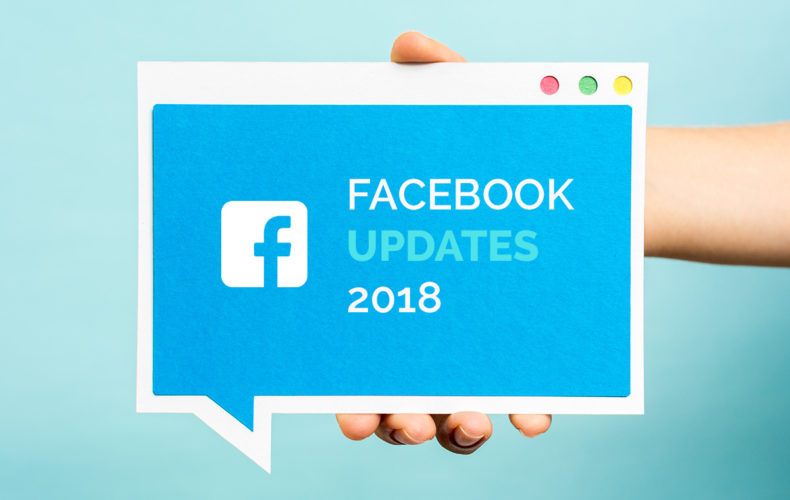Throughout 2018, Facebook made some pretty big changes to their platform. The algorithm has been updated. Fake profiles have been removed. Profiles are better protected. All this to stop the spread of “fake news” and to make Facebook a social place to be, again.
What does this mean for marketers? Well, a lot. Businesses are more accountable than ever for their content. New algorithms and security measures may make it tougher to connect with customers. Read on to learn about some of the major 2018 Facebook changes and what you can do to optimize your business page and content to keep up.
The Ever-Changing News Feed Algorithm.
Facebook made changes to its algorithm – again. This time, they are prioritizing posts from family and friends over those from businesses or media.
When Facebook first began, it was purely a social platform – a place for people to connect with their family and friends. Two years later, the company added pages for companies and celebrities. Over time, Facebook businesses and organizations found it to be a useful marketing tool, which prompted a change to the algorithm to support business post visibility.
Since the algorithm made it easy for business posts to be seen, people spent more time on the platform (scrolling through business and media posts). However, some businesses – as is often the case with each new or changing social media platform – began to spam their audiences with excessive “BUY NOW” and clickbait posts. There were also fake profiles that spread “fake news,” used to sway unsuspecting readers. The platform became less social and more “sales-oriented.”
Facebook found that users weren’t happy, even though they spent more time on the platform. They were frustrated by pushy and untrustworthy content – and saw fewer friend and family posts. So the platform recommitted to becoming a social place again. In January 2018, it updated its algorithm so news feeds would prioritize family and friend posts over those from businesses and publishers (regardless of whether the business or media content was “fake”).
Today, businesses pages are still important to it’s algorithm since that is where a majority of engagement actually happens. Updated page features give audiences a better view of how others are interacting with the business page and posts. For example, rather than seeing just a page’s post in your news feed, you will see that your friend “John Doe” recently liked, commented on or shared the post. When the post appears in your news feed, it will show his engagement.
Fake profiles. Fake news.
When excessive numbers of fake profiles emerged and fake news continued to grow – and capture the ire of the public – Facebook decided to step in. Along with removing the fake profiles, the platform also limited what content may be included in a post. For example, before, if you wanted to put a link in your post, you could use any image you wanted for the image card. Not anymore. Facebook now requires that the image card is the pre-set photo from the link. It’s one way to ensure the principle of “what you see is what you get.”
The good news for marketers is that Facebook does permit adding photos to the image card, so you can have multiple square images in the link preview.
Even though this change might limit marketers’ creative expression, it will help keep out fake news. It even helps take out some of the spammy clickbait. So now content on the platform can start to become reliable and fun again.
Facebook and you. A party of two.
Another way Facebook is alleviating the spread of fake news is limiting how content gets published on the platform. They have begun to review and limit application program interfaces (APIs), to thwart unwanted access to a page admin’s personal information. Simply put: in order to protect people’s privacy, Facebook is creating restrictions to the third-party platforms that publish to Facebook.
That’s right. Some publishing platforms will no longer be able to post on Facebook. But, it won’t be impossible – the platform has created an application to legitimize the third party platforms so they could confirm their legitimacy and contract to not use users’ personal information.
To reduce the need for APIs, Facebook has invested in native tools to do the things that marketers want. For example, you can publish or schedule posts right on Facebook, reducing the need for a third party API and keeping your information secure.
Facebook is always changing, as is all of social media. But after the scandals, invasion of privacy and overall bad practices, Facebook is hoping its efforts make the platform a good place to be social again.
If you are looking to optimize or master your Facebook use with the updates, contact insight180! We are happy to help with any questions you may have about these changes.

